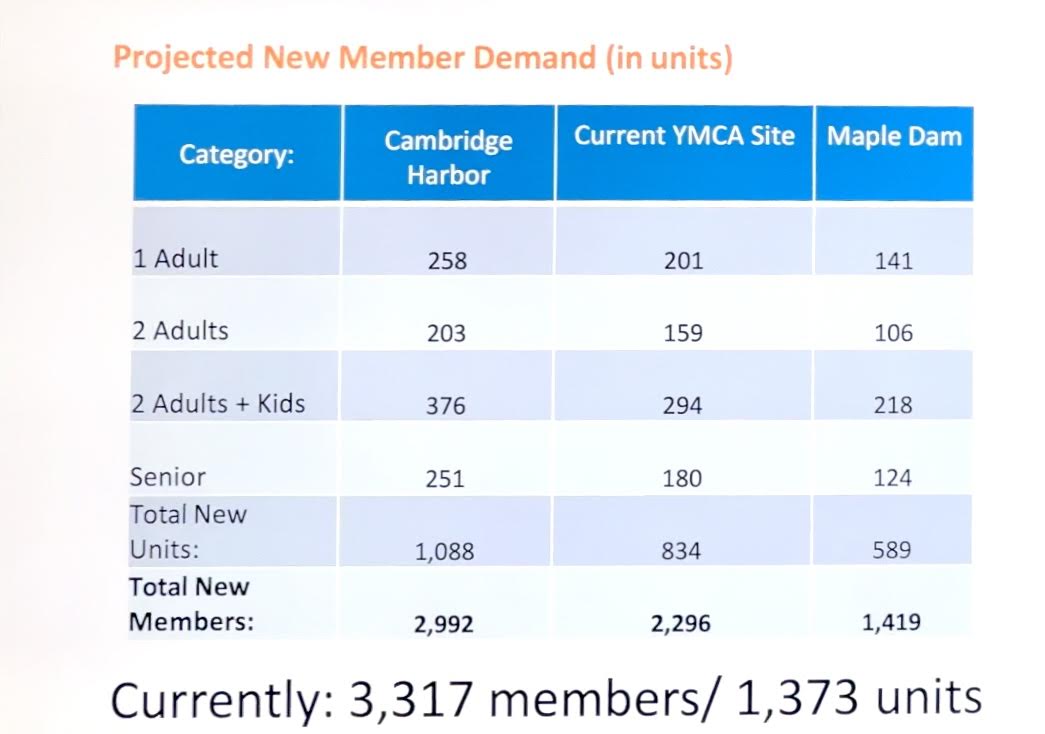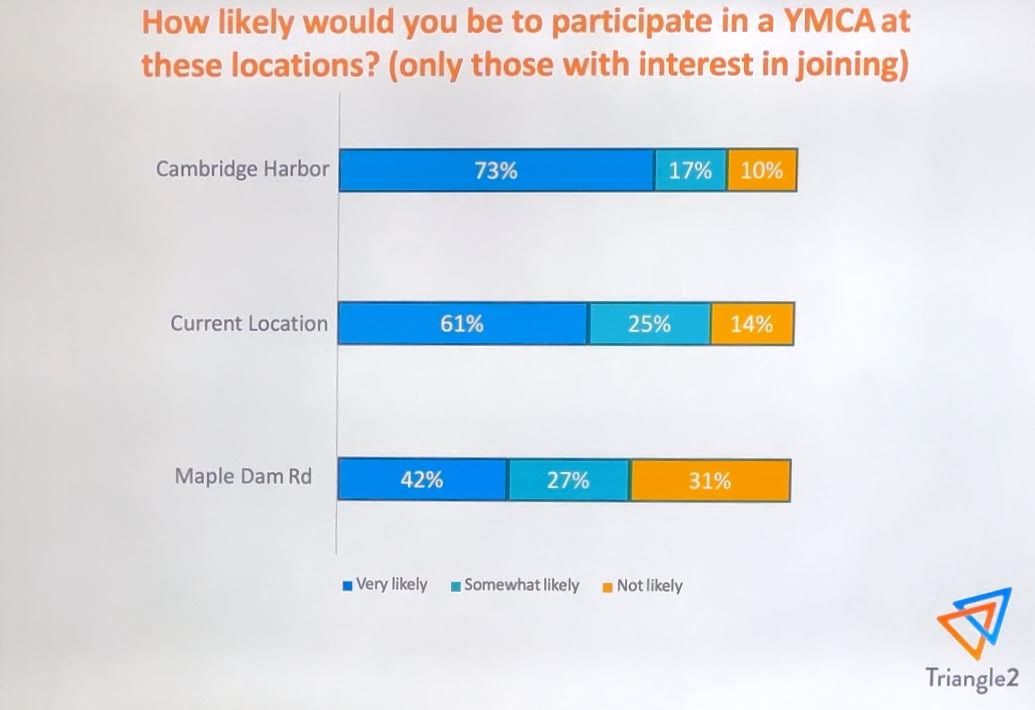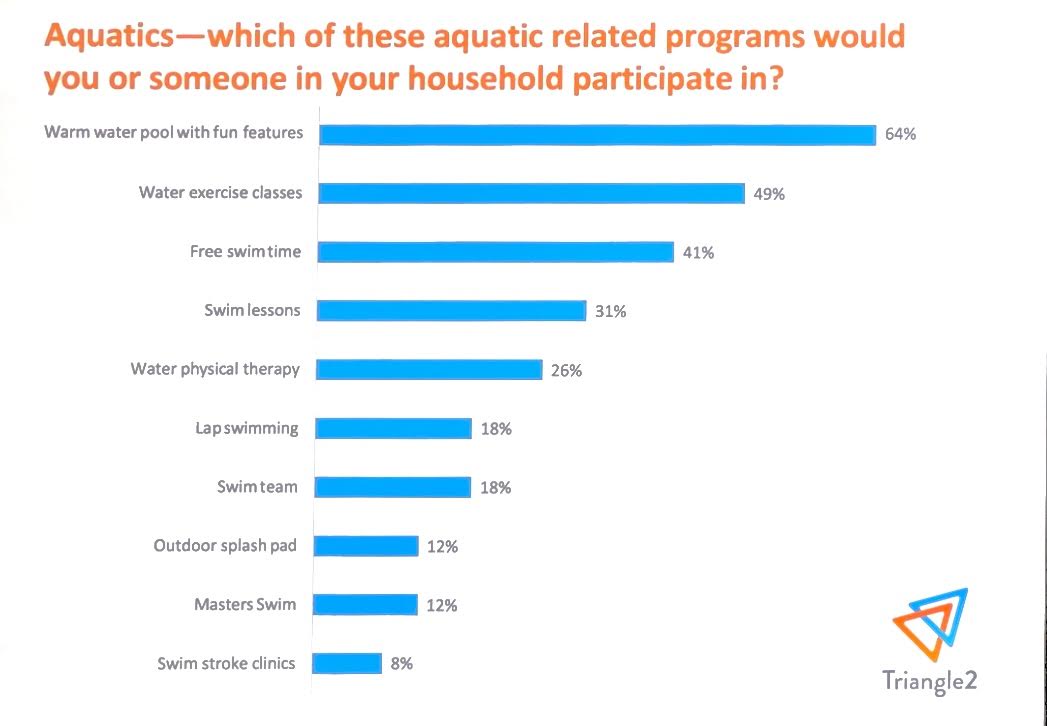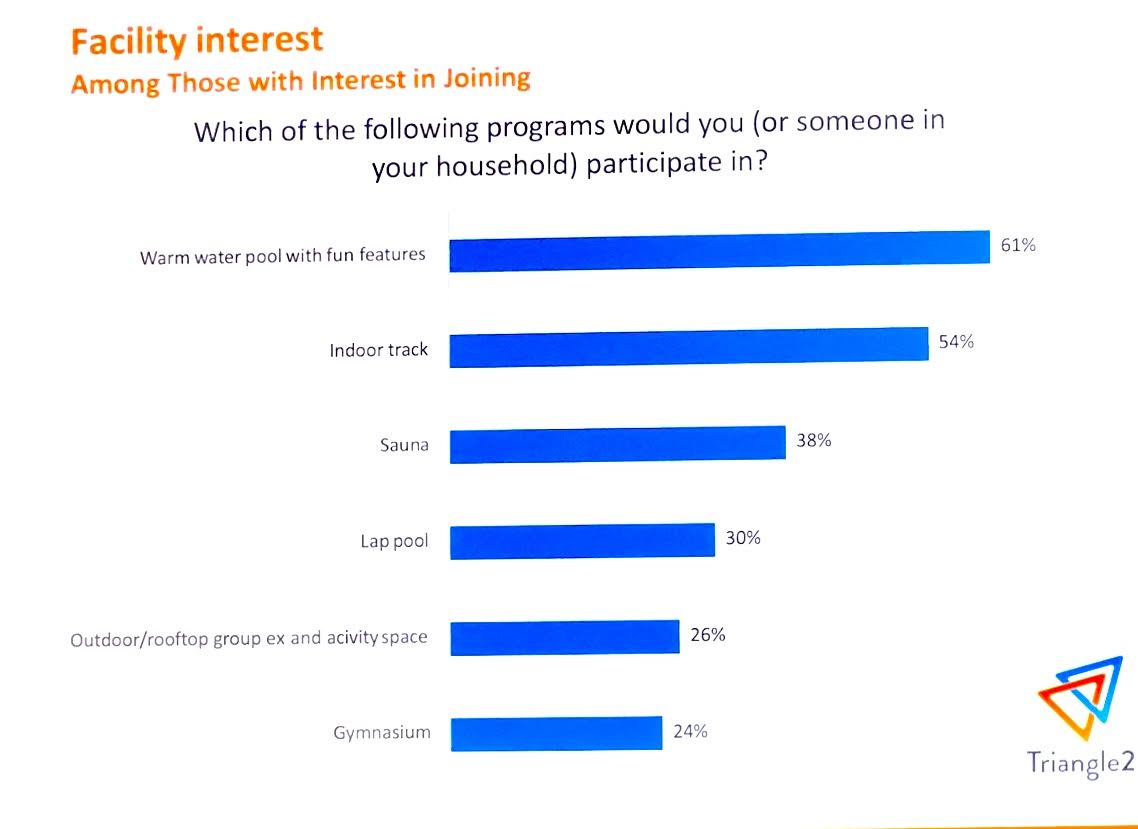
Robbie Gill
On the evening of June 18th, a crowd gathered in the gymnasium of the Pauline F. and W. David Robbins Family YMCA in Cambridge for a meeting on a controversial subject. People sweated in the sauna-like conditions of the echoey gym as Robbie Gill, CEO of YMCA of the Chesapeake, presented the results of a market study on the possible future of the Cambridge Y.
“We were working on a plan, as some of you may have heard, to renovate this facility prior to the pandemic and trying to figure out how to build a bigger wellness center,” said Gill, who added that they had wanted to “really try” to make the current facility the best they could.
But then the pandemic hit in 2020, and all the services of the Y were shut down. However, at the same time, they began building a new 52,000-square-foot facility in Chestertown, which opened in January 2022. With a double gymnasium, walking track, warm water pool, and other state-of-the-art offerings, it became very popular and currently has 6,100 members.
“And it was at that point we really paused, and we said, maybe we need to get a better understanding of what Dorchester County needs from a facilities, amenities, and programs standpoint before we try to navigate a building that was built in 1929 to teach kids,” said Gill.
So, they contracted Triangle 2 Solutions for a market study of the Cambridge community to find out what potential Y members would want and need in a facility and which of three locations they would most likely wish to visit. The sites tested were the current facility on Talbot Avenue, a property on the corner of Maple Dam Road and Route 16, and the waterfront area that is intended to become the Cambridge Harbor complex. Gill made sure to reach out to Cambridge Waterfront Development, Inc., which is responsible for the Harbor project, and CWDI was interested in the partnership.
Gill turned the presentation over to Lori Swann and Tom Massey, Triangle2’s CEO and president, respectively. Massey explained that their company, which was founded in 2000, works only with nonprofit organizations, churches, hospitals, boys and girls clubs, and YMCAs, the last of which they’ve conducted more than 250 studies for. Then Swann went through some data slides and explained the results of their Cambridge investigation.
Triangle2 interviewed 814 households that were not already members of the YMCA. While they did conduct a small email survey, the results Swann presented at this meeting were those of only the phone interviews. The majority of the people who participated in the survey, 68%, had lived in the county more than ten years.
Before mentioning anything about the sites, prices, or amenities, Triangle2 asked if the respondents would be interested in joining the Y, and 44% said they were likely to join, while 25% said they were “somewhat likely.” Some said they wouldn’t join because “they were too old.”
“The Y’s a lot more than exercise,” countered Swann. “But this was just community perceptions.”
People who were interested said they would want to use the cardio or strength-training equipment, participate in group exercise, or meet new people. But the most popular facility named was a warm-water pool “with fun features” (61% of respondents).
“Water exercise, exercise classes come in real close behind that,” said Swann, “but everybody wants it all when it comes to aquatics.”
It should be noted that the current Cambridge Y does not have a warm-water pool.
Swann ended her talk by stating that a building at Cambridge Harbor would double the number of people who could be served at the other two sites tested. “I’m not saying they weren’t good sites, but they’re not as good a site as the waterfront site.”
When Gill took over again, he picked up on the theme of the pool, which currently is a lap swimming pool that has no shallow entry and so cannot accommodate children who haven’t yet learned to swim. Also, people with limited movement ability have challenges in accessing the pool.
“These new pools that we build have one or two steps in a very shallow area,” Gill said.
He added that a new, larger facility would allow for a double gymnasium that could have multiple programs and features, including a track where members could walk in the air conditioning on a hot day.
“And so, in essence,” said Gill, “what we want to do is address community need, and there’s no community that’s more deserving of a newer YMCA than this one.”
A sample of the slides shown.








Larry Chitlik says
The current pool would be a warm water pool if it’s heating system was maintained properly. The current pool is excellent for those doing laps and exercising. Y Management has delayed installing new handicapped access equipment. Y Management has essentially stopped HVAC maintenance of the building and this has not helped. The current site is large enough to add a beginner level pool and all other improvements. The current location is more centrally located than the options offered. Tax base issues were not addressed in the study which is of key importance to the utility of the study.
How much would the Y make in profit by sale of the current site if allowed to relocate? Is this a driving force in their effort to relocate?
Cookie Brohawn says
The present YMCA campus seems to be more than adequate for updated amenities, such as a warm water pool and the like. Not knowing the exact of the property acreage, it would seem to be able to hold: pickle ball courts, expanded parking, the safety of an in-town neighborhood; no waterfront hazards for children; an ongoing and thriving children-focused gardening program (on campus).
1929 is misleading in that that was the lovely entry that was torn down. The area that is presently the Y was opened in 1956 and that is a fact! Old? Yes.
We could use new ventilation systems, new floors, new paint, and the rest seems quite useable.
A heater on the present pool??? Sure!! Another cold water pool? Sure!
Why not include paying and loyal members in a query? We’re there many days each week—myself and countless others are there 5 days every week.